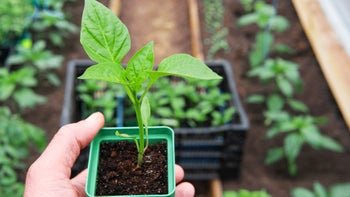
16 High-Fiber Vegetables — and How They Can Benefit Your Diet
Key takeaways:
Fiber is a nondigestible carbohydrate that benefits the body in different ways. Vegetables are an excellent source of fiber.
Fiber helps food move through your digestive system, prevents heart disease and diabetes, and makes you feel fuller longer.
Broccoli, beans, and pumpkin are some of the most fiber-rich vegetables. But all vegetables — fresh, canned, or frozen — can help you reach your daily fiber needs.
Most people in the U.S. don’t get enough fiber in their daily diets. So, most people could benefit from eating more fiber. Prioritizing vegetables is one easy way to do this.
Table of contents

Fiber is an important part of a daily diet. And there are lots of ways to work it into your diet. But which foods have the most fiber? One of the best sources of fiber is fruits and vegetables. Some high-fiber vegetables, like broccoli, kale, and beans, have even earned the well-deserved title of “superfoods.”
Among their many health benefits, vegetables high in fiber nourish a healthy gut microbiome and help with blood sugar, cholesterol, hunger, and weight control.
Which vegetables are high in fiber?
Many vegetables are rich in fiber. Below is a list of high-fiber vegetables, in order from the highest fiber content to the least. You’ll also find recommended serving sizes and the amount of fiber you can expect to get from them.
High-fiber vegetables | Serving size | |
1. Artichoke | 9.6 | 1 cup |
2. Beans (navy) | 9.2 | ½ cup |
3. Green peas (cooked) | 8.8 | 1 cup |
4. Mung beans | 7.7 | ½ cup |
5. Pumpkin | 7.1 | 1 cup |
6. Taro root | 6.7 | 1 cup |
7. Cooked Brussels sprouts | 6.4 | 1 cup |
8. Sweet potato (cooked) | 6.3 | 1 cup |
9. Parsnips (cooked) | 6.2 | 1 cup |
10. Jicama (raw) | 5.9 | 1 cup |
11. Winter squash (cooked) | 5.7 | 1 cup |
12. Broccoli (cooked) | 5.2 | 1 cup |
13. Soybeans | 5.2 | ½ cup |
14. Avocado | 5 | ½ cup |
15. Carrots | 4.8 | 1 cup |
16. Kale (cooked) | 4.7 | 1 cup |
What vegetables are low in fiber?
Even vegetables that are relatively low in fiber have 2 g to 3 g per cup, so don’t dismiss them entirely. Vegetables with smaller amounts of fiber include:
Celery
Beets
Cassava
Cooked cabbage
Onions
Taro leaves
Asparagus
Save over 40% on Qsymia with GoodRx
Discover the once daily Qsymia for weight management. Qsymia is for adults and children 12-17 in combination with a healthy diet and regular exercise.

How much daily fiber do you need?
Adults need 14 g of fiber for every 1,000 calories they consume, according to the National Academy of Medicine and the Academy of Nutrition and Dietetics. This works out to a daily goal of about:
25 g of fiber for women
38 g of fiber for men
While vegetables can help you meet your daily fiber goals, they aren’t the only option. You can also get fiber from:
Grains, especially in whole-grain foods like whole-wheat bread, oats, quinoa, millet, and brown rice
Nuts
Seeds
How to get the most out of high-fiber vegetables
Typically, the more of a vegetable you eat, the more fiber you consume. So eating the skin of potatoes, the seeds of eggplants, and the stems of broccoli will give you even more fiber.
Some of a vegetable’s fiber may be lost in food processing or preparation. But that shouldn’t stop you from choosing frozen or canned vegetables. The amount of fiber lost in the freezing or canning process doesn’t erase the nutritional benefits of these veggies.
For example, here’s how much fiber is in different preparations of 1 cup of green peas:
Read more like this
Explore these related articles, suggested for readers like you.
But juicing vegetables is a different story. If you empty the pulp from your juicer into your compost bin, you lose a lot of the fiber. Instead of tossing the pulp and its fiber, you can use it to make veggie burgers. Or, instead of juicing, you can simply blend veggies into smoothies and then drink it — fibrous pulp and all.
In the end, the best way to eat vegetables is what fits your life, budget, and personal wellness goals.
Benefits of high-fiber vegetables
Vegetables high in fiber have some excellent benefits. But before you add more vegetables to your meals, keep in mind that it helps to slowly increase your fiber intake. Not giving your body time to adjust to increased fiber can lead to stomach discomfort, such as bloating and gas.
Here are some ways fiber helps:
Adds bulk to your diet: This helps fill you up, so you feel satisfied and don’t reach for unplanned snacks.
Lowers “bad” cholesterol: High levels of low-density lipoprotein (LDL) cholesterol are associated with increased risk of heart disease. Fiber helps bring LDL cholesterol down.
Lowers blood sugar levels: Fiber’s gel-like consistency helps trap carbohydrates and slow sugar absorption.
Prevents constipation: Fiber adds bulk to your stool and can soften it, too. As a result, stool can pass through your digestive tract more easily.
Who should add high-fiber vegetables to their diet?
Most people in the U.S. can benefit from eating more high-fiber greens and other veggies. Most people don’t get enough fiber.
Who should avoid high-fiber vegetables?
There’s no maximum amount of fiber that people should consume. But some people can experience stomach discomfort when they eat lots of high-fiber foods, like kale and Brussels sprouts. Here are some times when you may need to temporarily limit your fiber intake:
When you have active bowel or intestinal issues
During certain cancer treatments
Before a colonoscopy procedure
Talk with a healthcare professional or dietitian if you have questions about how much fiber is right for you.
Signs your body is low on fiber
Your body will give you signs that you’re not getting enough fiber. Here are some things to look for:
Constipation: Having fewer than three bowel movements per week or having bowel movements that are hard, dry, or difficult to pass are signs you could use more fiber.
Hemorrhoids: These are veins around your anus. Hemorrhoids can become inflamed as a result of a low-fiber diet due to the strain of passing feces.
Frequent hunger: High-fiber foods tend to fill you up more and take longer to digest than low-fiber foods. So, if you find yourself reaching for a snack soon after lunch, consider a high-fiber fruit or vegetable.
Frequently asked questions
Yes, broccoli brings a powerful dose of fiber — no matter how you prepare it. But keep in mind that raw broccoli has less fiber per serving than boiled broccoli.
Like other high-fiber greens, broccoli is also a great source of vitamin C and iron.
Yes, carrots are a high-fiber vegetable. A cup or raw carrots contains about 3.6 g of fiber, while a cup of cooked carrots has about 3 g of fiber.
Fiber is a form of carbohydrate that your body can’t fully digest. That means it doesn’t break down into sugar molecules for energy, like most carbs do. It might seem counterintuitive, but the fact that you can’t fully digest it is exactly why your body needs fiber.
The bottom line
Artichokes, beans, and kale are just some examples of vegetables that are high in fiber. Apart from helping you feel satiated, fiber-rich vegetables help with weight management, disease prevention, and regular bowel movements. And remember: Eating more vegetables in general is the key to a nutritious diet and a healthy gut microbiome.
Why trust our experts?



References
American Cancer Society. (2024). High-fiber and low-fiber foods.
Brown, L., et al. (1999). Cholesterol-lowering effects of dietary fiber: A meta-analysis. American Journal of Clinical Nutrition.
Dhingra, D., et al. (2012). Dietary fibre in foods: A review. Journal of Food Science and Technology.
Dietary Guidelines for Americans. (2019). Food sources of dietary fiber.
Food Data Central. (2019). Broccoli, cooked, boiled, drained, without salt. U.S. Department of Agriculture.
Food Data Central. (2019). Broccoli, raw. U.S. Department of Agriculture.
Food Data Central. (2019). Carrots, cooked, boiled, drained, without salt. U.S. Department of Agriculture.
Food Data Central. (2019). Carrots, raw. U.S. Department of Agriculture.
Food Data Central. (2019). Peas, green, canned, seasoned, solids and liquids. U.S. Department of Agricultyure.
Food Data Central. (2019). Peas, green, frozen, unprepared (includes foods for USDA’s Food Distribution Program). U.S. Department of Agriculture.
Food Data Central. (2019). Peas, green, raw. U.S. Department of Agriculture.
Food Data Central. (2019). Tomato and vegetable juice, low sodium. U.S. Department of Agriculture.
Larson, H. (2021). Easy ways to boost fiber in your daily diet. EatRight.org.
McGill, C. R., et al. (2015). Ten-year trends in fiber and whole grain intakes and food sources for the United States population: National Health and Nutrition Examination Survey 2001–2010. Nutrients.
MedlinePlus. (2022). Low-fiber diet.
Quagliani, D., et al. (2017). Closing America’s fiber intake gap. American Journal of Lifestyle Medicine.





























